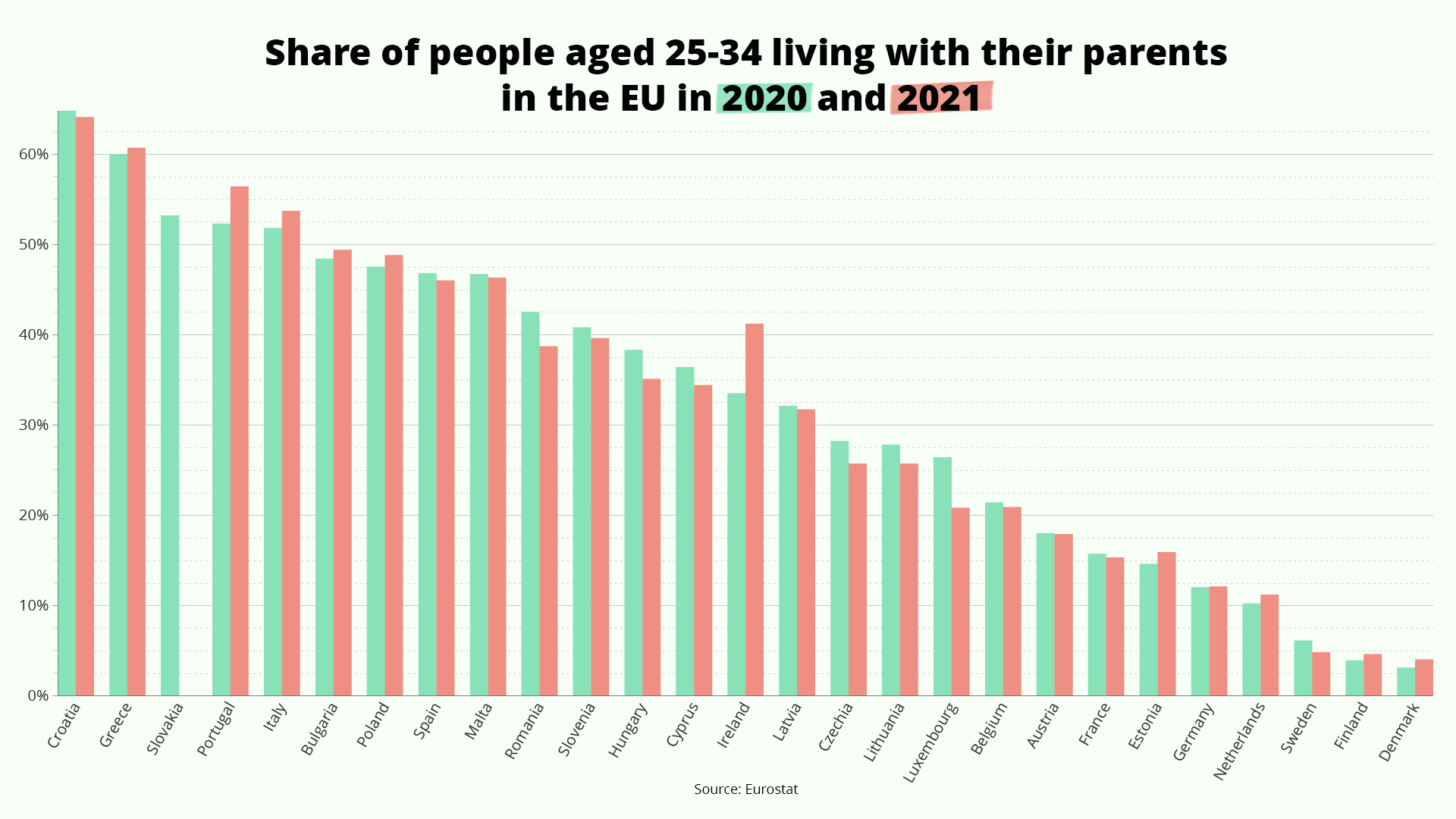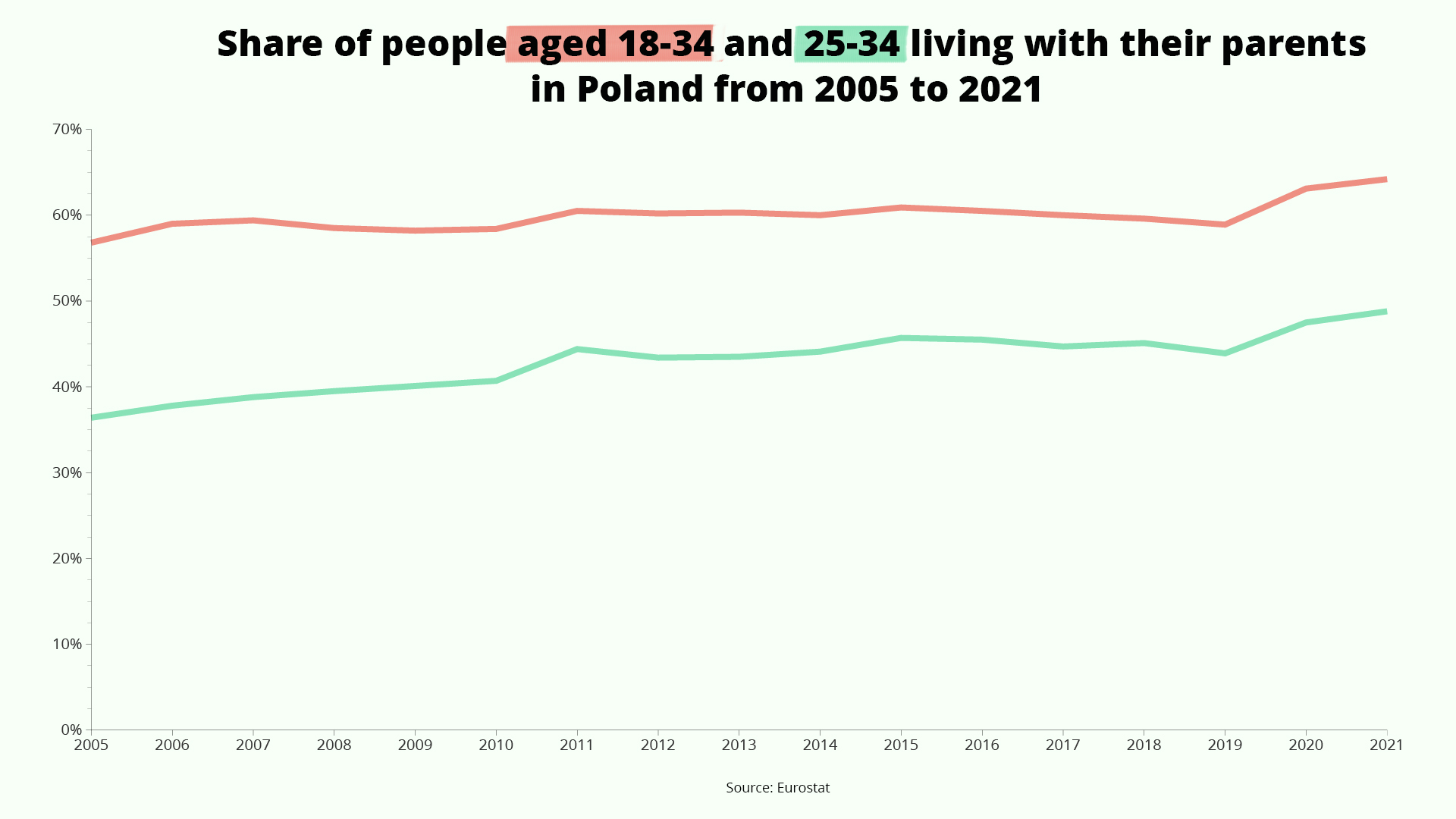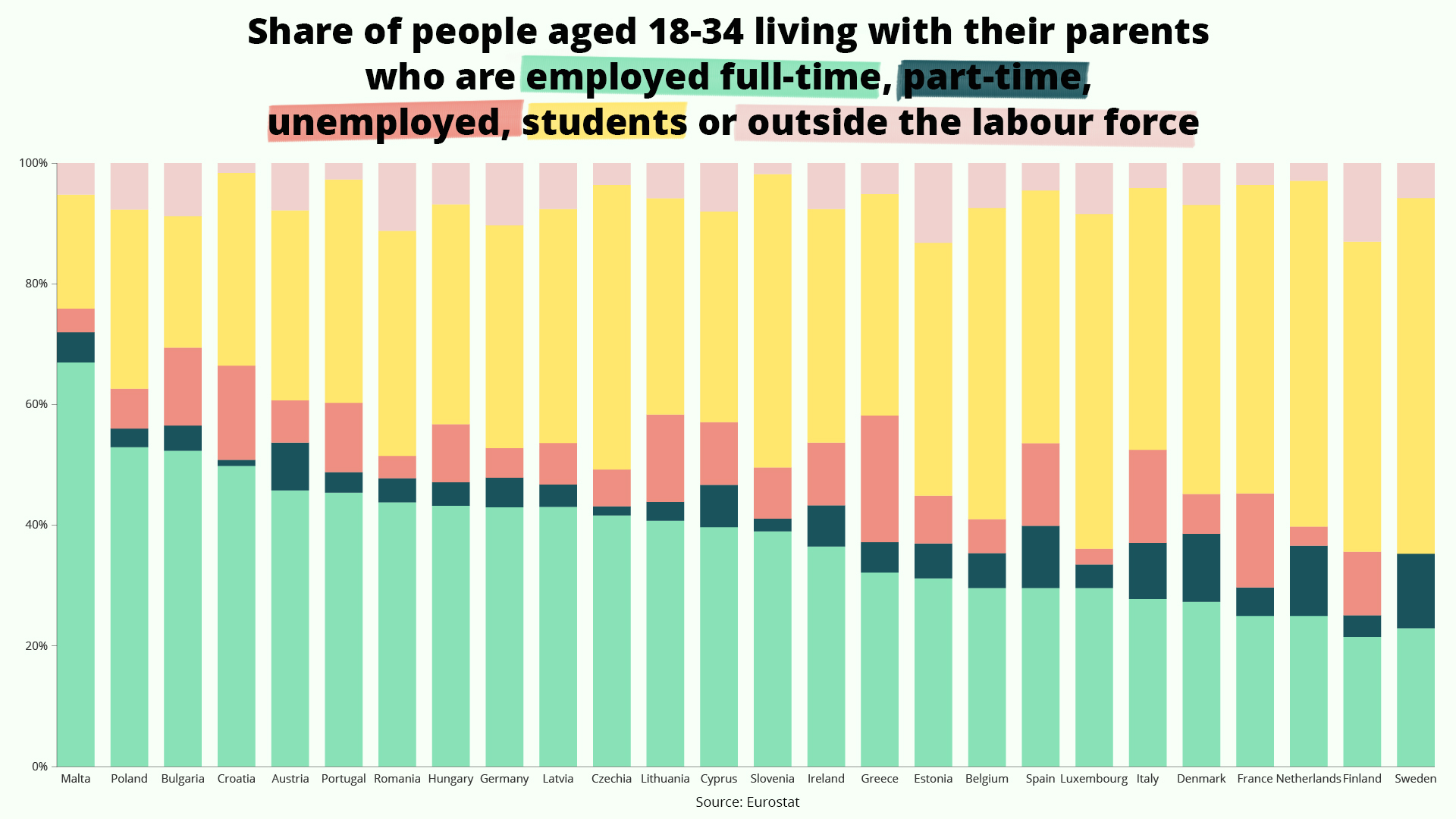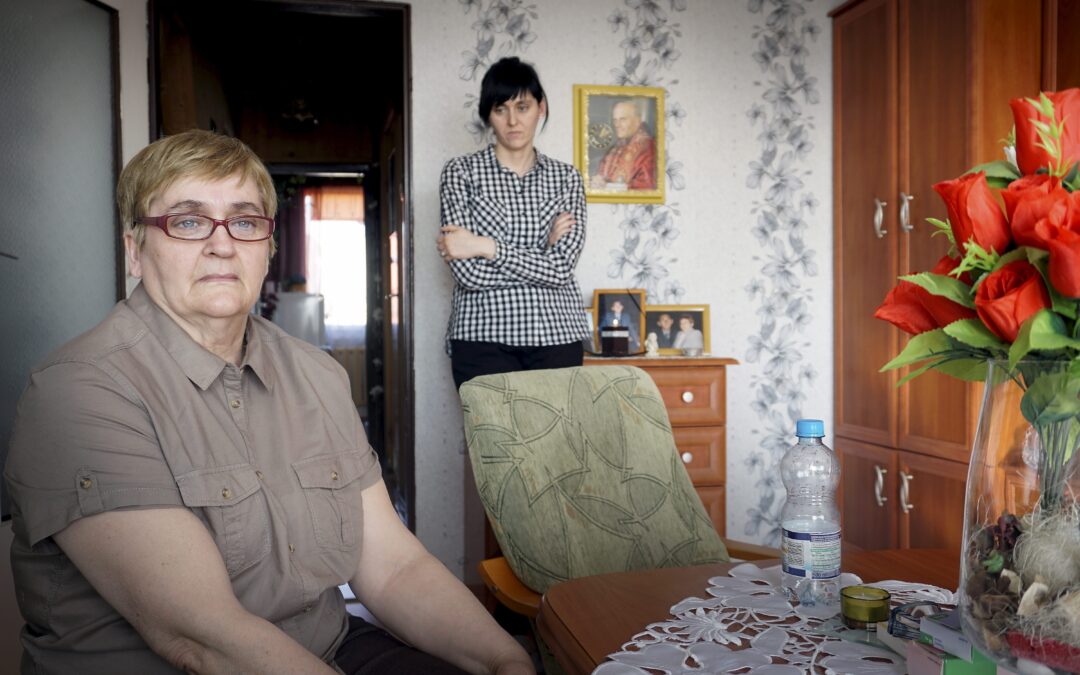Almost half of the Poles aged 25-34 live with their parents, new Eurostat data show. That figure has risen significantly from two decades ago, when it stood at around one third, and is now among the highest in the European Union.
The figures come amid ongoing debate over housing ahead of this autumn’s elections, with the leading political parties proposing measures to help address a situation in which many Poles – especially the young – are increasingly priced out of both the mortgage and rental markets.

In 2020, the last year for which Eurostat provided full data for all of the EU’s 27 members, 47.5% of people aged 25-34 in Poland were living with their parents. That was the seventh-highest figure in the bloc.
In 2021, the proportion rose to 48.8%, which was the sixth-highest level (though data from Slovakia is missing). Of those still living with their parents in Poland in 2021, 59.9% were men and 40.1% women.
When also including the youngest adults, the share of those aged between 18 and 34 living with their parents in Poland was 64.2% in 2021. In that age range, Poland again ranked sixth highest in the EU in 2021 and seventh in 2020 (when Slovakia’s data were available).
The last two decades have seen a gradual rise in Poland of the proportion of those living with parents aged 25-34 (which is up from 36.4% in 2005) and aged 18-35 (which stood at 56.8% in 2005).

Nearly half of the young Poles aged 18 to 34 who are still living with their parents have a full-time job, which is the second highest proportion in the EU. A further 30% are students. Only 6.6% are unemployed.
This suggests that young Poles, even those earning a salary, are being priced out of the housing market. “The high proportion of young people living with their parents indicates an existing shortage of supply,” wrote the Polish Economic Institute in a comment on the Eurostat data.
“In addition, availability has been limited by the currently unstable economic situation and increased interest rate levels translating into the ability of the young people to finance a purchase.”

Estimates of Poland’s housing shortage vary, from around 650,000 units, according to the development ministry, to as much as 4 million units, according to Pekao, a bank.
Up until recently, residential developers saw soaring demand, with a record amount of new housing delivered in 2021, supported by record low-interest rates introduced during the Covid pandemic. This trend halted as the central bank raised interest rates to combat inflation, with demand for mortgages falling drastically.
The issue has caught the attention of Poland’s major political parties as they compete for votes ahead of this autumn’s elections. The ruling Law and Justice (PiS) party and the main opposition, Civic Platform (PO), have both proposed schemes whereby the state would subsidise mortgages for first-time buyers.
These proposals have been criticised by The Left (Lewica), which argues that increasing demand without boosting supply will simply further raise prices. It has instead proposed to build 300,000 new social housing units over the next four-year parliamentary term.
Poland’s main left-wing opposition group has presented plans to build 300,000 social housing units, increase financing for childcare and energy transformation, and to end the rule-of-law dispute with Brussels that has frozen billions of euros in EU funds https://t.co/djE3NprMD7
— Notes from Poland 🇵🇱 (@notesfrompoland) April 3, 2023
Main image credit: Grzegorz Celejewski / Agencja Wyborcza.pl

Alicja Ptak is deputy editor-in-chief of Notes from Poland and a multimedia journalist. She has written for Clean Energy Wire and The Times, and she hosts her own podcast, The Warsaw Wire, on Poland’s economy and energy sector. She previously worked for Reuters.




















